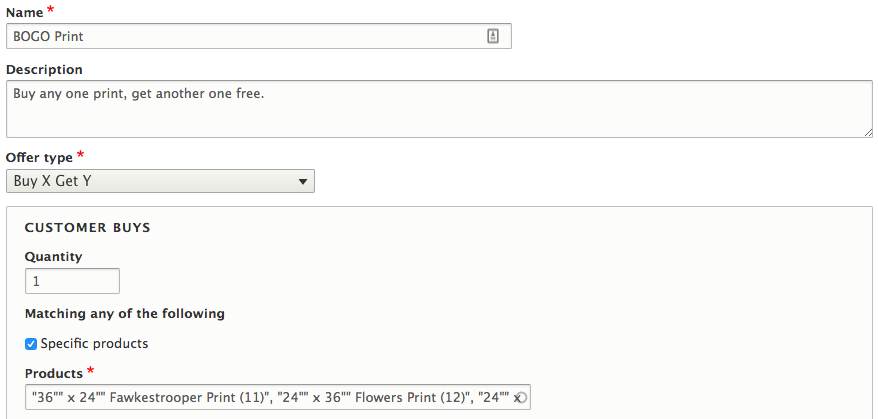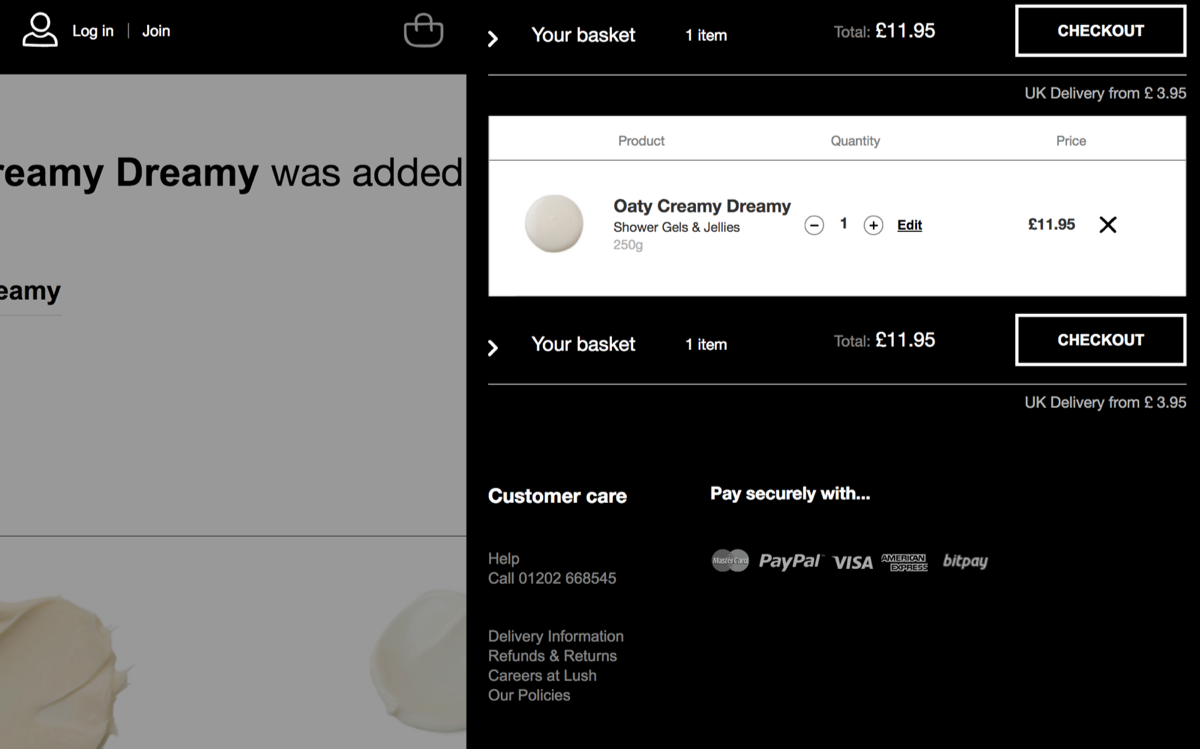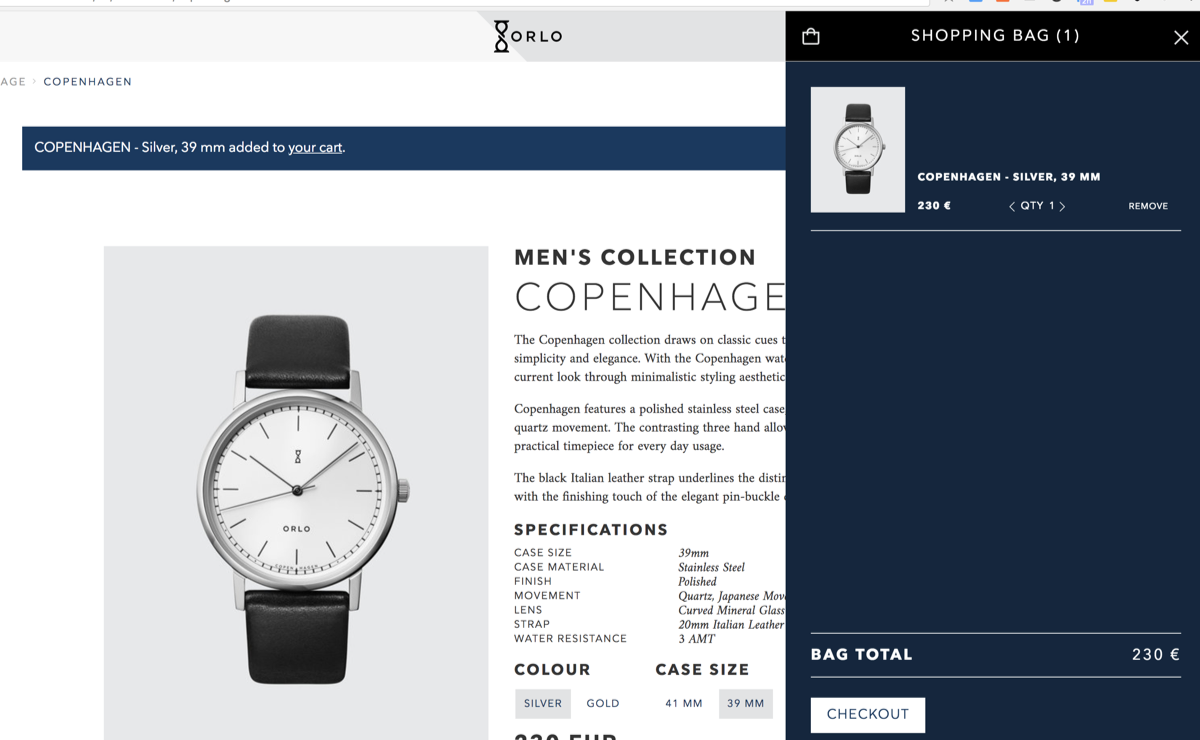Apr 4, 2019
The Drupal community has been abuzz for the past two years with talk of "Becoming Headless" or "Decoupling All The Things." The trend raises reasonable questions from end users who feel this means Drupal is moving into a space that no longer represents them. We hear similar concerns from Drupal Commerce users when we talk about delivering headless commerce. However, we don't believe anyone should be worried that improving support for Drupal as a REST API server will detract from efforts to improve its utility as a traditional CMS.
From our perspective, you can (and we do) support at the same time both traditional applications, where Drupal itself provides the front end, and headless applications, where a JavaScript application renders data served from a Drupal powered REST API. In fact, in this post I'll demonstrate how supporting the latter has actually improved Drupal (and Drupal Commerce) for everyone. Headless initiatives help uncover bugs and fine-tune the underlying application architecture.
Apr 2, 2019
Commerce Guys is joining forces with some of our Technology Partners and a variety of contributors to promote Drupal Commerce at DrupalCon Seattle from April 9-11, 2019.
We're excited to introduce the Drupal community to Centarro Toolbox, a collection of SaaS products and support packages that help Drupal Commerce teams build with confidence. First revealed at MidCamp last month, we can't wait to show it off to the community at large while also connecting about all things Commerce 2.x.
Come demo Centarro Toolbox (and grab some sweet swag)
Centarro Toolbox includes three of our own SaaS tools designed to complement any Drupal Commerce site. They provide update automation, code quality monitoring, and a sales and analytics dashboard that delivers key insights to merchants. We've also bundled in offers from our partners at Avalara, Human Presence, and Lockr, and we'd love to share all about them.
Read more about what we're bringing, giving away, and speaking about...
Feb 5, 2019
At the end of 2018, Dries Buytaert, creator of Drupal, asked folks involved with the project to share their thoughts on what's "holding Drupal back." His prompt came on the heels of two great blog posts related to his company Acquia's growth strategy and lessons he's learned and applied from Amazon's growth strategy. I didn’t beat his third post on overcoming Drupal’s obstacles to the punch, but the series did prompt me to think long and hard about the barriers we face as maintainers and leaders of the Commerce project within the Drupal ecosystem.
For the entirety of our existence, Commerce Guys has focused on building and promoting Drupal as an eCommerce platform, first through Ubercart and then Drupal Commerce. While eCommerce is a huge industry, our reach within the community has only averaged around 5% of all Drupal sites. Given the diverse and varied types of users Drupal serves, I consider this relatively low number unsurprising. (A certain percentage will also choose to integrate third party shopping cart systems, but historically that’s always been a fraction of the number of Drupal sites using our native solutions.)
It’s tempting to be fatalistic about Drupal Commerce’s growth and accept that our growth rate will be pegged to Drupal’s own growth rate so long as our relative percentage holds. It actually is an important baseline to acknowledge - our success is tied to Drupal’s success, and so we prioritize contributing to initiatives that help improve Drupal’s core APIs, make it easier to maintain and upgrade, and attract new audiences through API-first / JavaScript initiatives. However, I think we can and should do better than just waiting for growth to happen upon us.
Sep 26, 2018
We’ve had several great opportunities this summer to connect with the Drupal community and share our latest work on Drupal Commerce. We’ve been able to highlight specifically our efforts to progressively decouple Drupal Commerce on Drupal 8.
Aug 1, 2018
We recently released Drupal Commerce 2.8 and are excited to highlight some of the new features. We also published new releases of two key contributed modules that make lightning-fast, client-side Add to Cart forms possible, representing a significant improvement to the customer experience.
Drupal Commerce 2.8 adds BOGO support
The most significant new feature in the 2.8 release is the “Buy X, Get Y” offer type funded by Norwegian Drupal agency Ny Media. You can now configure promotions with just core functionality that grant free or reduced price products after a set number of other products have been added to the cart. This work required a re-architecture of parts of the promotions data model and a redesign of the user interface to make it easier for merchants to create promotions in general.

Other key updates and improvements in this release include:
Read the release notes to get the full scope of additional updates and also to learn about some backward compatibility breaks that affect custom promotions, custom tax types, and order processors. We'll keep chipping away at the core roadmap and plan to add query-level entity access to the API for the next release.
Commerce Cart Flyout “Add to Cart” Update
The newest release of the Cart Flyout module includes notable updates to its JavaScript based “Add to Cart” feature. In addition to powering an editable shopping cart in a “flyout” sidebar, it now improves the Add to Cart experience with a very fast client-side solution using resources defined by the Commerce Cart API.
The standard Add to Cart form uses Drupal’s Forms API to update form elements based on attribute selection. It can submit three to four Ajax requests on average while customers select a product variation, but the new module can build, update, and submit the form purely in the client via JavaScript. Because the server sends the browser all the data it needs to build the interactive form in the initial request, we're able to avoid any additional requests to the server until the customer is actually ready to initiate the Add to Cart. Check it out:
Even under high visitor load, users will have a faster experience overall. Server resources are only devoted to users who decide to convert. Casual visitors can browse and modify product variations as much as they like and not affect other users’ load times. This is yet another step on our path toward providing a progressively decoupled eCommerce solution for the community to build robust experiences for merchants and consumers.
Jul 27, 2018
Commerce Guys maintains a suite of ecosystem modules that give merchants easy access to third-party integrations as part of leading the Drupal Commerce project.
Jul 23, 2018
This content was created in partnership with Avalara.
May 15, 2018
On April 2, 2018, Acquia retired Mollom, a spam fighting tool built by Drupal founder Dries Buytaert. As Dries tells the story, Mollom was both a technical and financial success but was ultimately shut down to enable Acquia to deploy its resources more strategically. At its peak, Mollom served over 60,000 websites, including many of ours!
Many sites are looking for alternatives now that Mollom is shut down. One such service Commerce Guys integrated earlier this year in anticipation of Mollom's closing is Human Presence, a fraud prevention and form protection service that uses multiple overlapping strategies to fight form spam. In the context of Drupal, this includes protecting user registration and login forms, content creation forms, contact forms, and more.
Similar to Mollom, Human Presence evaluates various parameters of a visitor's session to decide if the visitor is a human or a bot. When a protected form is submitted, the Drupal module requests a "human presence" confidence rating from the API (hence the name), and if the response does not meet a configurable confidence threshold, it will block form submission or let you configure additional validation steps if you choose. For example, out of the box, the module integrates the CAPTCHA module to rebuild the submitted form with a CAPTCHA that must be completed before the form will submit.
We believe Human Presence is a great tool to integrate on its own or in conjunction with other standalone modules like Honeypot. Furthermore, they're joining other companies like Authorize.Net, Avalara, and PayPal as Drupal Commerce Technology Partners. Their integration includes support for protecting shopping cart and checkout forms, and we are looking for other ways they can help us combat payment fraud in addition to spam.
Learn more about Human Presence or reach the company's support engineer through their project page on drupal.org.
Apr 27, 2018
Last week we announced the Commerce Cart API module with a goal of facilitating new patterns for Commerce 2.x shopping cart management. As far back as the launch of Lush's UK store, we began seeing more sites adopt one such pattern where the cart block just shows an icon or the number of items in the cart but clicking on it expands a sidebar that lets customers update the cart contents via JavaScript interactions:

We saw this more recently with a similar feature on the Orlo watches website launched by our friends at 1xINTERNET:

We expect each successive Drupal Commerce release to cut down the number of things every site developer has to do to launch a new store. Providing a general solution to this cart paradigm would do just that! We received positive feedback on the cart flyout at DrupalCon, so building on the Cart API, we have now released Commerce Cart Flyout to provide a progressively decoupled cart block and form, which gives customers a more modern cart update experience.
What does the Cart Flyout module do?
- Provides a new cart block which triggers the cart form flyout.
- Allows quickly changing quantities of an order item.
- Allows removing order items without a page refresh.
- Gives flexibility for design and interaction that is not limited by Drupal's Form API and rendering layer.
What is next
- Provide better user feedback when an operation occurs, such as dimming the form when the auto-update happens.
- I would love to see the add to cart message's "your cart" link trigger the flyout.
Check out the demo video!

How is it built?
In discussion with Bojan, we decided to use Backbone.js and Underscore.js for the implementation since they ship with Drupal core. Yes, it was a journey back in time, but it also provided a way to ship a contributed project without introducing an additional dependency for end users.
The module stores Underscore.js templates in Twig files that register to the theme registry. The decision to use Twig and the theme registry allows themes to customize the template and markup. We do this for our demo theme Belgrade, which you can see in its code repository: http://cgit.drupalcode.org/belgrade/tree/templates/commerce/cart.
In fact, I used a ReactJS implementation to test the underlying API and prototype this module. If you’re interested, see the test sub-module in the Cart API repository.